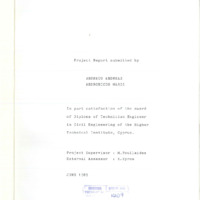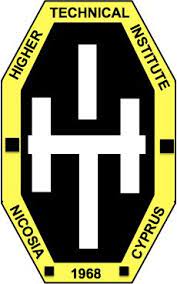The determination of the shear strength of rockfill materials
- Τίτλος
-
The determination of the shear strength of rockfill materials
- Θέμα
- Soil mechanics
- Shear strength of soils
- Shear (Mechanics)
- Rockfills
- Δημιουργός
-
Andreou, Andreas
- Andronicou, Maria
- Πηγή
- Higher Technical Institute
- Το πλήρες κείμενο είναι διαθέσιμο από το Υπουργείο Ενέργειας, Εμπορίου Βιομηχανίας και Τουρισμού
- Εκδότης
- Library of Cyprus University of Technology
- Ημερομηνία
- 1989
- Συνεισφέρων
- Poullaides, M.
- Kyrou, K.
- Δικαιώματα
- Απαγορεύεται η δημοσίευση ή αναπαραγωγή, ηλεκτρονική ή άλλη χωρίς τη γραπτή συγκατάθεση του δημιουργού και κάτοχου των πνευματικών δικαιωμάτων.
- Μορφή
- Γλώσσα
- eng
- Τύπος
- text
- Αναγνωριστικό
-
CED 0011
- Σύνοψη
-
There is a wide variety of problems associated with Soil Mechanics. These can be solved by: a combination of theoretical knowledge, understanding of the geology, and the laboratory determination of geotechnical properties.
The importance of the shear strength lies in the fact that in all stability problems such as design of foundations, retaining walls and embankments a good knowledge of the strength of soil involved is required.
This project deals with the determination of the shear strength of rockfill materials, requiring testing in the large shearbox.
Chapter 1 deals with the principles governing the shear strength and all relevant theory is provided.
Chapter 2 deals with the various types of the shear strength tests.
Chapter 3 deals with the large shearbox used for determining the shear strength of rockfill materials. It gives explanation regarding the apparatus and the procedure followed to perform the experiments.
Chapter 4 deals with the experimental results.
Chapter 5 deals with the authors' conclusions.
The choice for a rockfill dam instead of an earthfill dam is governed by:
(i)Sound rock availability as a fill material
(ii)Good rock foundation conditions.
The exclusion of fines from a rockfill increases its compressibility and reduces its shear strength. It also makes placement in layers and compaction by vibrating rollers more difficult; the cost increases because of the required processing and problems may arise in disposing of rejected material.
An all-in rockfill as it comes from the quarry has been used for several Cyprus dams. Permeability, strength and deformation properties have been satisfactory although some parent rock materials were of only moderate strength.
The amount of fine material coming from a quarry depends on the type and quality of the virgin rock and the method of excavation. A distinction between earthfill and rockfill to be meaningful in geotechnical terms, implies that rockfill will not develop excess pore pressures during construction. This requirement may put an upper limit on the content and quality of fines.
The angle of shearing resistance of most rockfill materials,is usually,in excess of 45°.
For large rockfill embankments (over 100m height) typical values of 0' used in design,usually vary between 37° to 45°. These values will probably produce a fairly realistic factor of safety, although the use of these angles of shearing resistance for small rockfill embankments is likely to be very conservative for some rockfills.Furthermore, the use of a constant angle of shearing resistance in the stability analysis, ignoring the curvature of the failure envelope, will not give the correct position of the critical failure
surface.
The excess shear strength characteristics of good quality rockfill materials, today, allow the construction of high embankments in excess of 350m.
- Πολυμέσα
-
 CED 0011.pdf
CED 0011.pdf
Τμήμα του The determination of the shear strength of rockfill materials


